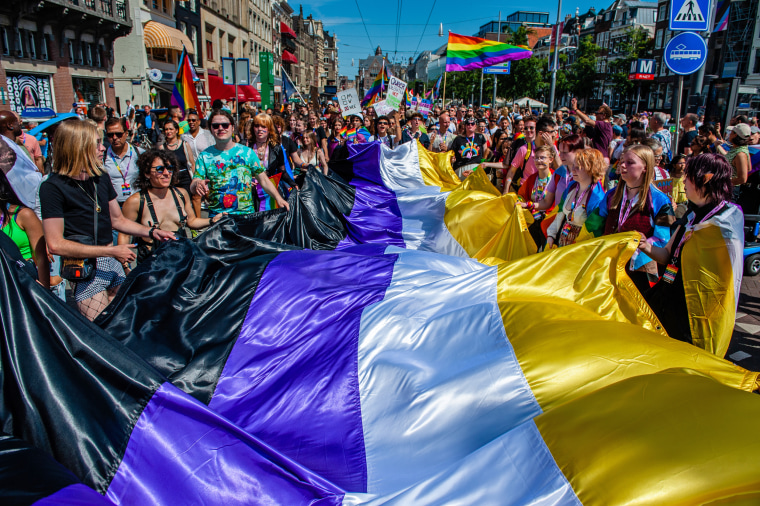As the country and world become more aware and accepting of LGBTQ identities, an increasing number of people are coming out as nonbinary, which means their gender identity is neither exclusively male nor female.
A Pew Research Center survey published last year found that about 1.6% of U.S. adults identify as transgender or nonbinary. Transgender means someone’s gender identity, or the personal sense of their gender, differs from the sex they were assigned at birth, which is based on their external sex characteristics.
Transgender can be thought of as an umbrella term, and nonbinary exists under that, though not all nonbinary people identify as transgender. Some nonbinary people also identify with other terms that describe identities outside of the male-female binary, such as genderfluid, genderqueer or bigender.
Younger adults are more likely than older adults to be trans or nonbinary. Pew found that 5.1% of adults under 30 are trans or nonbinary, including 2% who are a trans man or trans woman and 3% who are nonbinary.
Two national surveys of LGBTQ people ages 18 to 60 found that 11% of them identified as nonbinary, according to a June 2021 report from the Williams Institute, a think tank at UCLA School of Law.
Related links:
- Explainer: What does transgender mean?
- About 5% of young adults identify as transgender or nonbinary, U.S. survey finds
- Ms., Mr. or Mx.? Nonbinary teachers embrace gender-neutral honorific
- 'I am everything': Janelle Monáe confirms she's nonbinary in new interview
- Gender-neutral X passports become a reality for U.S. citizens
Though the term nonbinary has gained increasing mainstream recognition over the last decade, nonbinary people are not new or a trend. Out & Equal, a nonprofit that advocates for LGBTQ workplace equality, created a resource that traces nonbinary identities back to 2000 BCE.
Different cultures also have their own terms for nonbinary identities, according to GLAAD, an LGBTQ media advocacy group. Some Native American people, for example, use the term two-spirit to describe people who are neither exclusively men nor women.
Nonbinary people can use any personal pronoun, including “he” and “she.” Many use the gender-neutral pronoun “they,” and some use neopronouns, such as “xe,” “xir” and “xirs.”
According to a 2021 Pew survey, a quarter, or 26%, of Americans say they know someone who uses gender-neutral pronouns, up from 18% in 2018.
Nonbinary people can dress in various ways, and some will pursue social and/or medical transition, while others won’t. Nonbinary is also different from intersex, which refers to people who are born with reproductive or sexual anatomy that falls outside of what people would typically describe as male or female.
International Nonbinary Day is celebrated annually on July 14 and is an opportunity to honor and recognize the nonbinary community.
The day was first celebrated in 2012, after nonbinary writer Katje van Loon wrote a blog post suggesting the nonbinary community be honored on July 14, which falls halfway between International Women’s Day (March 8) and International Men’s Day (Nov. 19).
In a BBC News essay published last year, van Loon explained why International Nonbinary Day is important.
“We can feel invisible in a world that still hasn’t completely understood what we are. So it’s nice to have a day that recognises our existence,” Loon wrote. “I want people to be happy with themselves. And if having a day helps you be happy with yourself, that’s great. That is the best outcome I could have hoped for from that one-off blog post that I wrote 10 years ago.”

